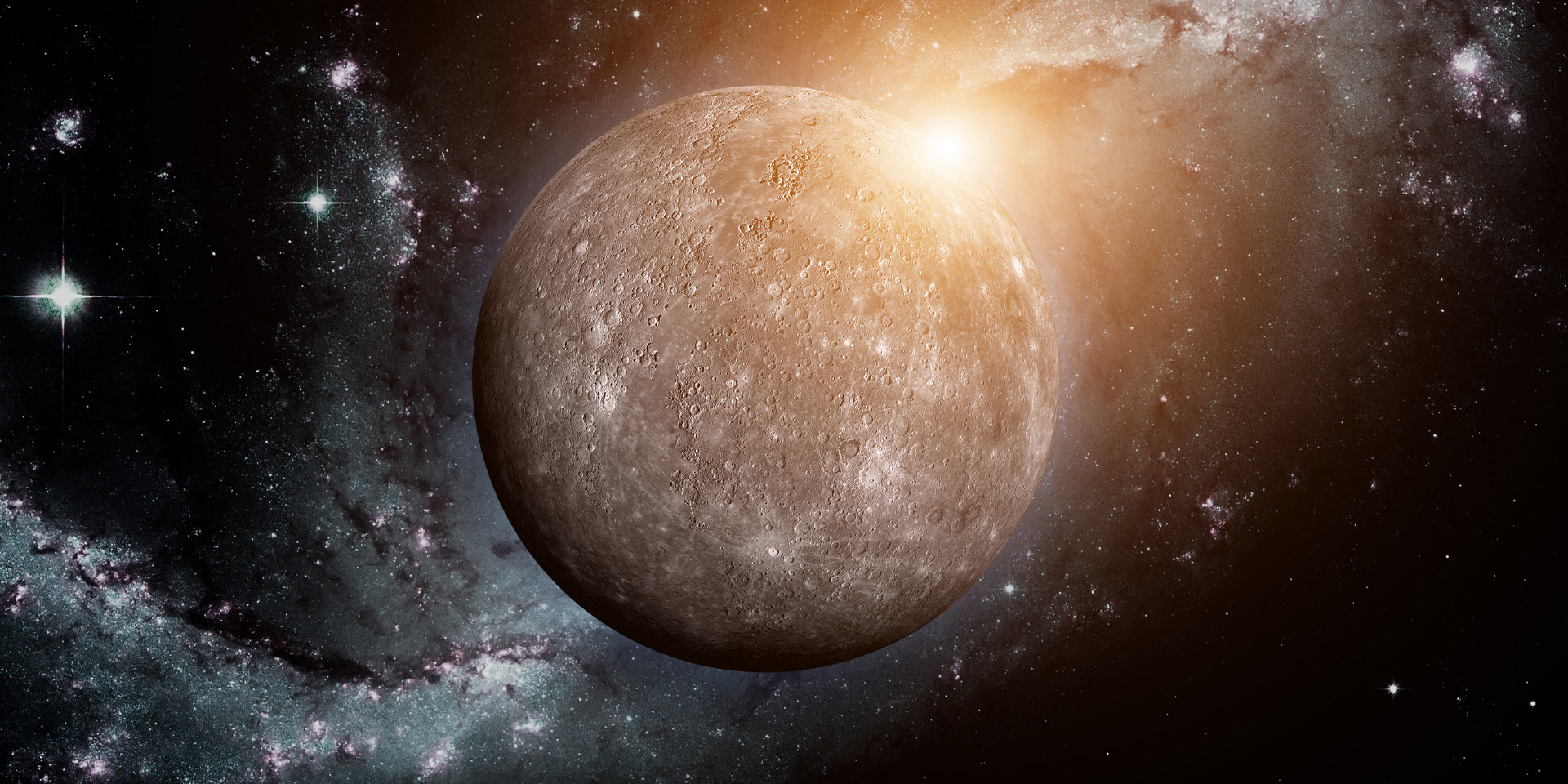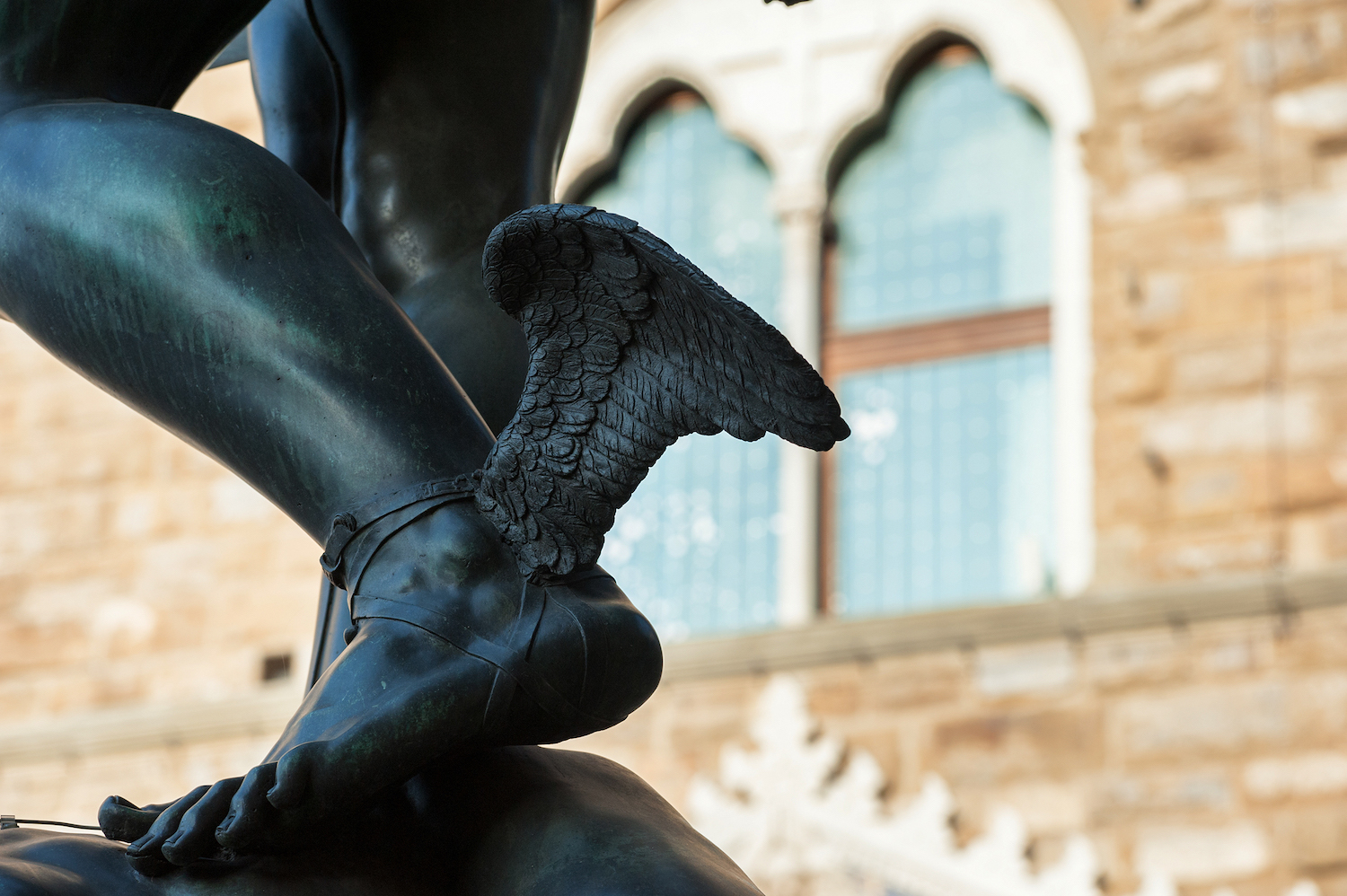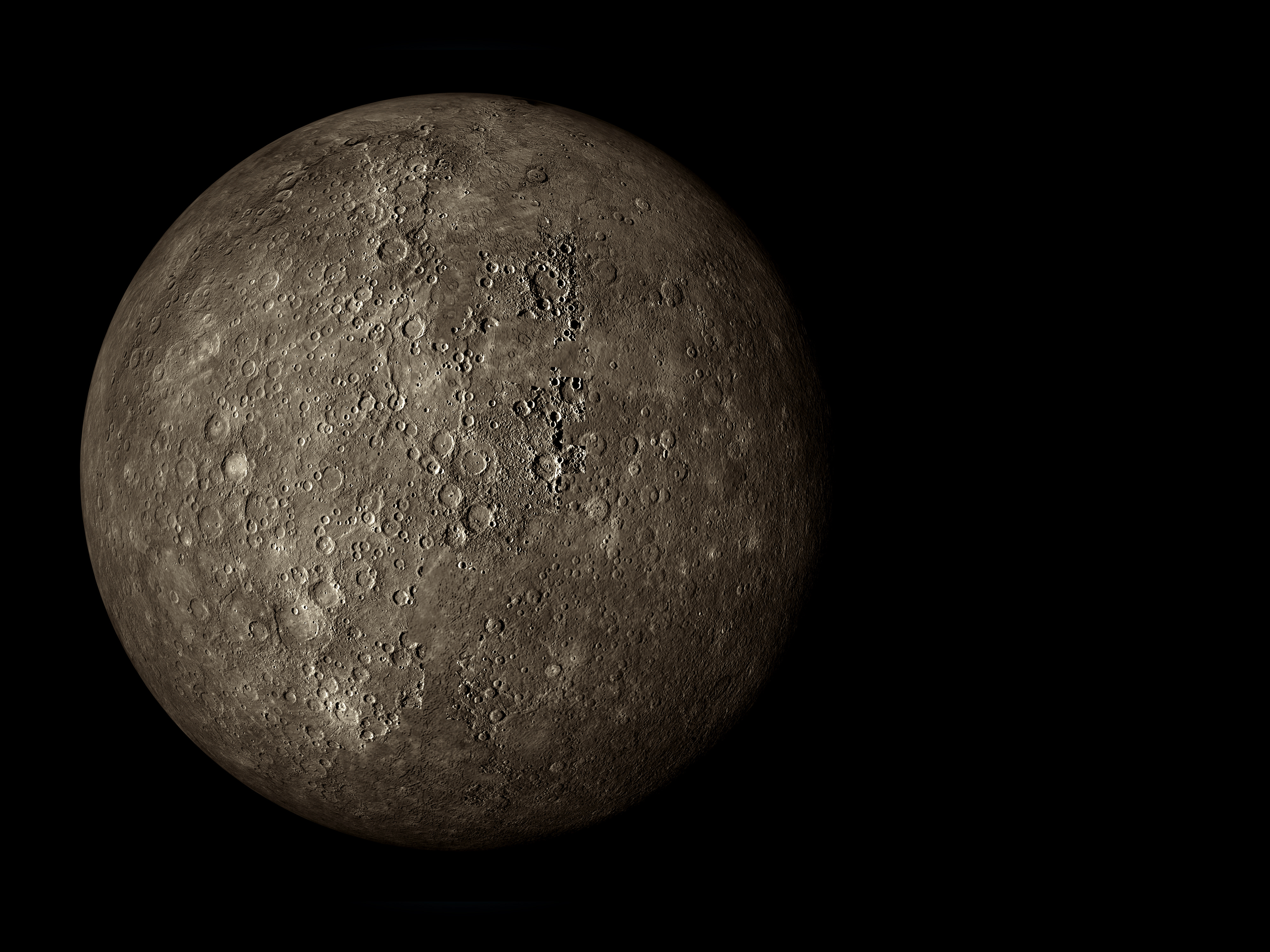
OLN.H | Mercury
The next neighbour that you’ll meet – and another you’ll definitely want to keep going past – is Mercury.
Travelling at 28,000 kilometres an hour, it will still take you 74 more days past Venus to get to this rocky, crater pocked little furnace, which is the the closest planet to the sun.

Mercury is also the smallest planet in our solar system, with a circumference of only 15,329 kilometres. It rotates on its axis very slowly–one day takes over 1400 hours (that’s over 58 days). Although Mercury’s rotation is slow, Its orbit is very fast; a full year takes just 88 days, the shortest year in our solar system.
Its speedy orbit is what led ancient Roman astronomers to name this planet Mercury, after their messenger god. Mercury was also the god of travelers, and is often depicted wearing winged sandals. In spite of the Roman name sticking around, it was Assyrian astronomers who first recorded Mercury’s presence.
Its rocky surface is made of iron sulfide that, on the sun side, hits temperatures of 427 degrees Celsius, but interestingly enough drops to minus 175 degrees Celsius in the areas not exposed to the sun. This drastic difference in temperatures–the most extreme in the solar system–is because Mercury has almost no atmosphere.
On most planets, the atmosphere acts as a blanket, helping to maintain steady temperatures. Remember Venus’ thick atmosphere? That’s why it’s so much hotter than Mercury, even though it’s farther away from the sun. In spite of the tremendous heat during Mercury’s days, radar observations have shown frozen water in shadowed craters at Mercury’s north pole.

Venus and Mercury do have something in common: they’re the only two planets which do not have at least one moon. Mercury’s small size and proximity to the sun means that it wouldn’t have the gravitational force to hold onto a moon. Scientists aren’t sure why Venus doesn’t have a moon.
Mercury has been visited by two different spacecraft: Mariner 10 in 1974 and 1975, and MESSENGER (short for MErcury Surface, Space ENvironment, Geochemistry, and Ranging mission), which orbited Mercury between 2011 and 2015. Since then, MESSENGER has taken over 250,000 photographs, essentially covering the entire planet.
Past that, you’re headed to the sun, another 46 million kilometres and 109 days away. Getting there presents a whole new set of challenges, not the least of which is that you’d absolutely, without question, be vaporized before you ever managed to touch down.
Curriculum Reference Links
- Earth and Space / Building Blocks/ 1: Students should be able to describe the relationships between various celestial objects including moons, asteroids, comets, planets, stars, solar systems, galaxies and space.
- Earth and Space / Building Blocks/ 3: Students should be able to interpret data to compare the Earth with other planets and moons in the solar system, with respect to properties including mass, gravity, size, and composition.




